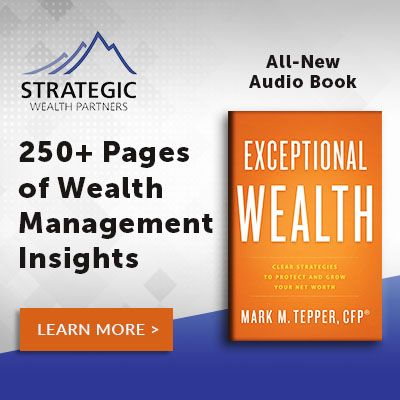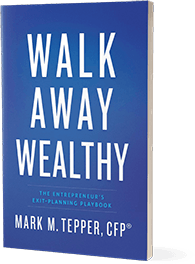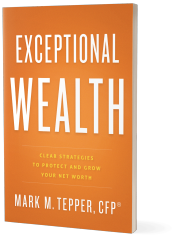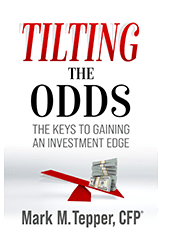How to Invest in a Recession
Last week, a client asked about our plans for investing in a recession. That reminded me that other clients have asked similar questions in the last few weeks. Thus, this week, we’ll talk about how I’m investing leading up to and through a recession. As always, feel free to let us know if there’s anything in particular you’d like me to write about.
While I started writing about how to deal with a recession, I realized there are two important events that will likely happen this year, and honestly, they happen in many years that lead up to a recession. There’s the recession itself, but there’s also the Fed response to the financial cycle. What you generally should see is the Fed reacting to a slowdown by adjusting the path of rate hikes, and then a possible recession. This year, the government’s past, dramatic approach to Covid is likely to make those two events happen very close together, as all the stimulus washes out and the effect of QT and rates fully take hold. That’s quite a change.

To start, how do you invest heading into these events? Basically, the way we were invested for the vast bulk of last year. Last year, we had a liquidity shock, this year, we’ll have a recession shock. Before the Fed shifts and we hit recession, the economy is going to decelerate. Growth peaks and the good times start to disappear. You want to invest in low-volatility, high-quality defensive names. You’ll find a lot of those types of businesses in utilities, staples, and healthcare. Also, as conditions peak, cash goes from a questionable investment to a great investment.
We should see the Fed react before we see clear evidence of a recession. Given the most recent data we saw last week, it strikes me as unlikely we could see any action before April at the earliest. Retail sales, jobs, and inflation are all too strong to shift any quicker. What action could they take in April? Again, considering that inflation has been coming back since the start of the year, it seems logical to expect a pause, where the Fed stops hiking rates, but leaves open the possibility they may have to restart if inflation pops up again.
Does a pause matter? Absolutely, at least on a historical basis. When the Fed pauses, the market has responded strongly. That seems particularly true in past decades with our increasingly financialized system.

What should happen with a Fed pause? Pausing, for better or worse, should assuage investor concerns that conditions will continue to tighten, at least at the pace they had been. This should cause the dollar to sink and financial conditions to relax. Realistically, how we started this year is fairly good practice for what we should expect to happen in this scenario. It’s also worth pointing out that traditionally, bonds are where we should most obviously see improvement. You still have to worry about a likely future credit event, but Treasury bonds won’t care and should look great.
We’ve already had a fair amount of evidence that a recession is coming, but it’s hard to say when recession really hits. In theory, we could be in a recession right now. Realistically, though, we should see retail sales and the labor market really slow before we see strong indications of recession.
The early part of a recession is likely to be tough on equities again, as earnings estimates are likely to see significant problems from here. You can talk about riding stocks through that downturn, but sentiment follows price, and a 25% downturn can work magic on sentiment. Thus, for all that we can have a stock market party on a Fed pivot, when the recession starts to bite, you want to get back to the old pre-recessionary stance of defensive, low-volatility stocks.

At some point, though, we get some mix of sufficiently negative data, sentiment, and Fed panic to create a bottom to the market, or at least a reasonably durable pause while we see what happens next. That’s the traditional, potential bottom for the stock market.
What should we invest in at the bottom? That’s hard to know until you get closer to that time, so you can see what bargains are around. In general, though, you want to flip your equity book from defensive, low-volatility stocks to growth and higher-beta stocks.
One likely winner would be energy-oriented companies. We’ve had years of underinvestment in the space, and even if it’s unpopular in some areas, we’re not going to realistically make our energy requirements shift all that quickly. As the economy potentially bottoms, energy should do quite well.
Past that, traditional areas of strong performance should be places of likely growth, such as cyclical companies and tech. Those areas should do well as growth comes back.
Of course, these things don’t go in a straight line, and problems can occur. For instance, when the Fed pivots, that’s likely to reignite inflation and animal spirits. What if inflation goes from 5.5% back to 7%? That would force the Fed to tighten more and would really hit markets and the economy. Such an outcome would be horrible, but is the sort of thing we need to be aware of as a possibility.
What if China starts exporting inflation to the US, particularly around the time the Fed pivots? The investing environment could get quite hostile if it starts to look like inflation is approaching the old highs.

What if the traditional recessionary bottom isn’t the final bottom? What if it takes a while for rate hikes and QT to fully flow through the system, so the final recovery takes a while? These are possibilities we need to keep in mind.
In general, we need to be flexible about what this will look like and consider the data as it comes in. I don’t know that the Fed will pivot in April, that just seems like the first realistic possibility. A pivot could come months later, maybe not until it looks like we’re already in recession. A recession may not bottom this year. There are an enormous number of possibilities here, and it’s best if we remain humble about that.
Currently, the risks are high enough we have to be focused on the downside. It seems likely that will change at some point this year, and we also need to keep that in mind. With a Fed pivot, for example, we have to be looking for upside, if only for a time. We can’t be cautious and defensive all the time and expect to win. When conditions change, we need to change.
Even if that constructive shift only lasts a month or two, it’s hard not to make some changes, because the future is fundamentally unknown. Maybe the mix of rate and stimulus changes, along with economic data, combines to make the environment reasonably palatable? Maybe there’s a bigger-than-expected gap between a Fed pivot and a recession? If we get more long and serious problems, it might feel comfortable to just stay defensive, but that’s usually when you’re most at need for a shift. As something becomes fully priced in, you shift from good risk/reward to reward-free risk.
Successful investing often doesn’t feel good. If you’re doing something that feels good and comfortable, chances are everyone else is doing the same basic thing. That’s not a recipe for outperformance, that’s a recipe for mediocrity, at best. This is likely to be a tough year for bulls and bears, alike, and preparation should help a great deal.
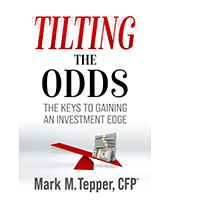 Enter your information below, and we will email you our new eBook, Tilting the Odds
Enter your information below, and we will email you our new eBook, Tilting the Odds

